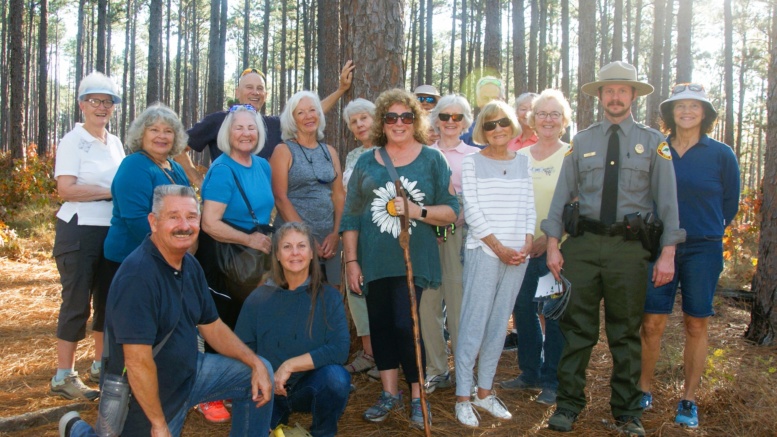Contributed
On Thursday, Nov. 9, Garden Club members traveled to the Weymouth Woods Sandhills Nature Preserve for one mile walk through the Longleaf Forest. It was a magnificent fall day.
Garden Club members were guided by Ranger Zach Lunn, who gave an enlightening tour of this beautiful area. Residents here in Seven Lakes all have Longleaf Pines in our yards. Did you know that the current Longleaf population is approximately three percent of its original number?
Through the tour, members gained a much deeper appreciation of these ancient, slow growing trees that adapted to and thrived in our unique Sandhills ecosystem. They have deep roots that allow them to endure the dry climate.
A one-year-old tree in the “grass stage” of its life will have a 3-foot root. In its “bottlebrush” stage it will grow in height, up to three feet a year, as well as sending down deeper roots. When it starts to send out branches, it has entered the sapling stage of growth.
Longleaf Pines reach maturity at 30 years and begin bearing pinecones. Did you know that the Fox Squirrel is the only squirrel that eats Longleaf pine cone seeds?
Controlled burns are conducted to mimic the natural process of low intensity burns occurring in nature. The burn process is essential to control the undergrowth.
The Longleaf grows slowly. It shoots up quickly in the first few years to get above normal fire height of three to four feet. The Longleaf will not burn once it reaches a height above the burn.
Under the pines, Turkey and Blackjack Oak grow prolifically. These fast growing trees will deprive the Longleaf of light and nutrients if not controlled.
The Longleaf has faced many threats from humans. The first was the harvesting of their sap for naval stores. The original process killed the trees. A later process using sulfuric acid scarred the trees and those scars are still visible today.
Because the Longleaf grows so slowly, it is not grown for lumber. Pine needles are the big harvest today and their major threat is development.
The clearing of Longleaf pines for the building of new homes in our neighborhoods is a daily occurrence. Yes, all those falling needles and pine cones are a bit of a nuisance.
Just remember that these magnificent flat-topped beauties were here long before we were and take special care to maintain those we can.









